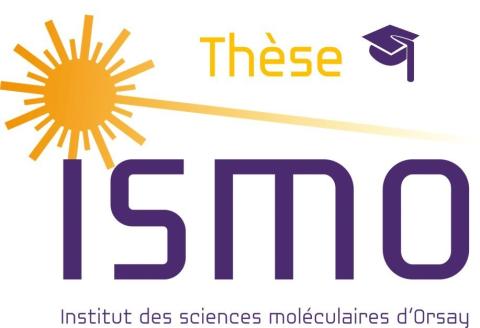
Soutenance de thèse de Miaobo Pan, en mode HYBRIDE
Soutenance de thèse de Miaobo Pan
Photophysical investigations of nano-structured luminescent surfaces
In order to contribute to Antimicrobial Resistance (AMR) fight, nano-structured surfaces were designed and investigated. One nanoplatform is based upon fluorescent nanoparticles (FNPs) with a red-emitting BODIPY (red-BDPMA) core and a pH-sensitive fluorescein derivative grafted on the outer shell. Such nanoprobes were first fully characterized in suspension (absorption, emission, pH sensitivity). Moreover, we demonstrated that a limited but controlled Förster Resonant Energy Transfer (FRET) occurs between red-BDPMA and fluorescein derivative. Then two strategies to design “nano-decorated” glass surface were chosen : 1-step and 2-steps methods. 1-step strategy allows to directly graft ratiometric pH sensitive FNPs on a silanized glass surface. It allowed pH measurement with a good sensitivity and reversibility. Monitoring of E. coli growth under physiological pH range was also conducted. In the case of 2-steps strategy, FNPs were introduced to silanized glass surface in the first place. Followed with fluorescein derivative’s modification to the immobilized FNPs on the glass. With 2-steps strategy, tuning the concentration of both red-BDPMA and fluorescein derivative could be beneficial to better control the dual-emission signal of the final platform.
Contact pour demander le lien
http://www.ismo.universite-paris-saclay.fr/spip.php?article2688
Soutenance de thèse de Miaobo Pan
Photophysical investigations of nano-structured luminescent surfaces
In order to contribute to Antimicrobial Resistance (AMR) fight, nano-structured surfaces were designed and investigated. One nanoplatform is based upon fluorescent nanoparticles (FNPs) with a red-emitting BODIPY (red-BDPMA) core and a pH-sensitive fluorescein derivative grafted on the outer shell. Such nanoprobes were first fully characterized in suspension (absorption, emission, pH sensitivity). Moreover, we demonstrated that a limited but controlled Förster Resonant Energy Transfer (FRET) occurs between red-BDPMA and fluorescein derivative. Then two strategies to design “nano-decorated” glass surface were chosen : 1-step and 2-steps methods. 1-step strategy allows to directly graft ratiometric pH sensitive FNPs on a silanized glass surface. It allowed pH measurement with a good sensitivity and reversibility. Monitoring of E. coli growth under physiological pH range was also conducted. In the case of 2-steps strategy, FNPs were introduced to silanized glass surface in the first place. Followed with fluorescein derivative’s modification to the immobilized FNPs on the glass. With 2-steps strategy, tuning the concentration of both red-BDPMA and fluorescein derivative could be beneficial to better control the dual-emission signal of the final platform.
Contact pour demander le lien
http://www.ismo.universite-paris-saclay.fr/spip.php?article2688
